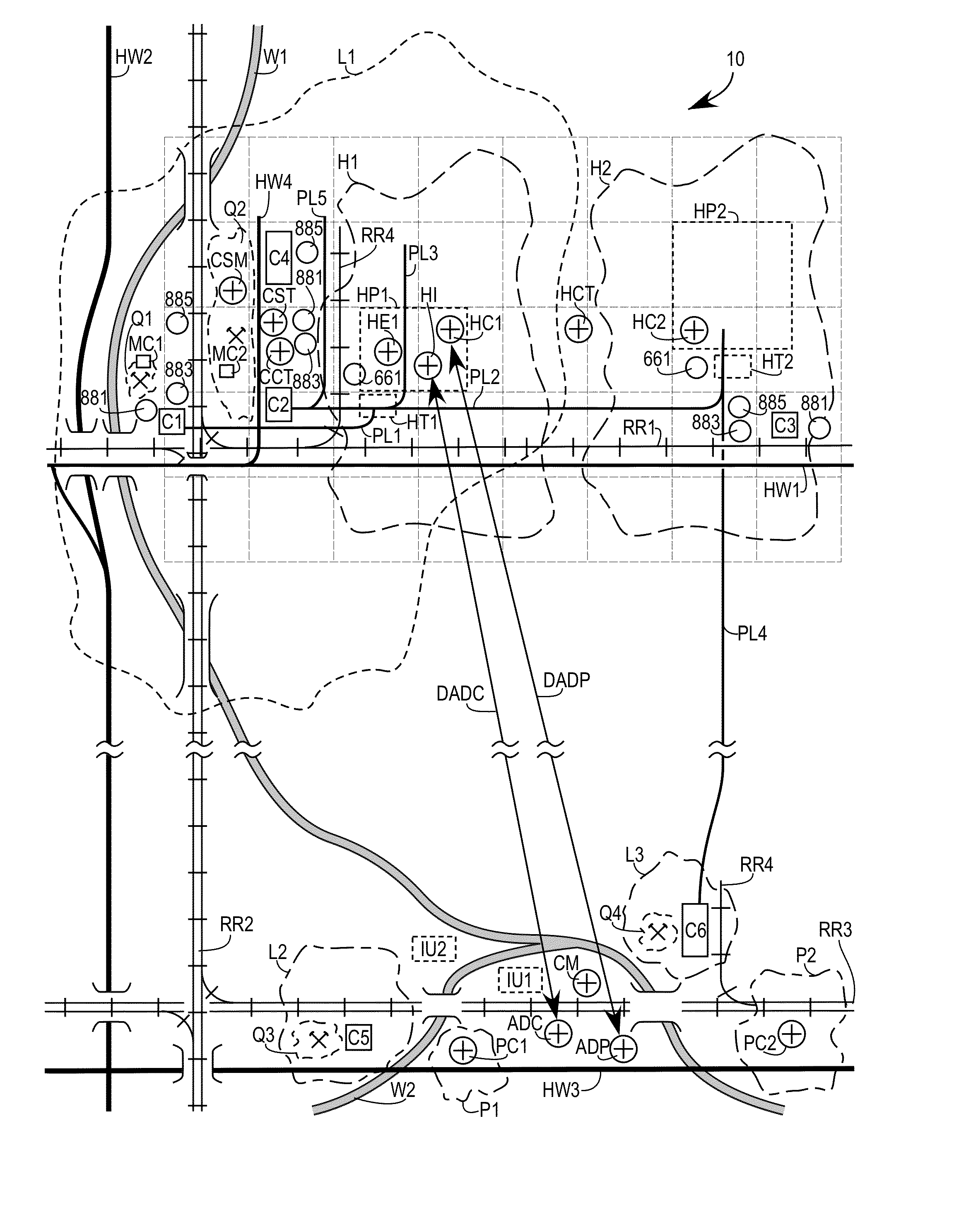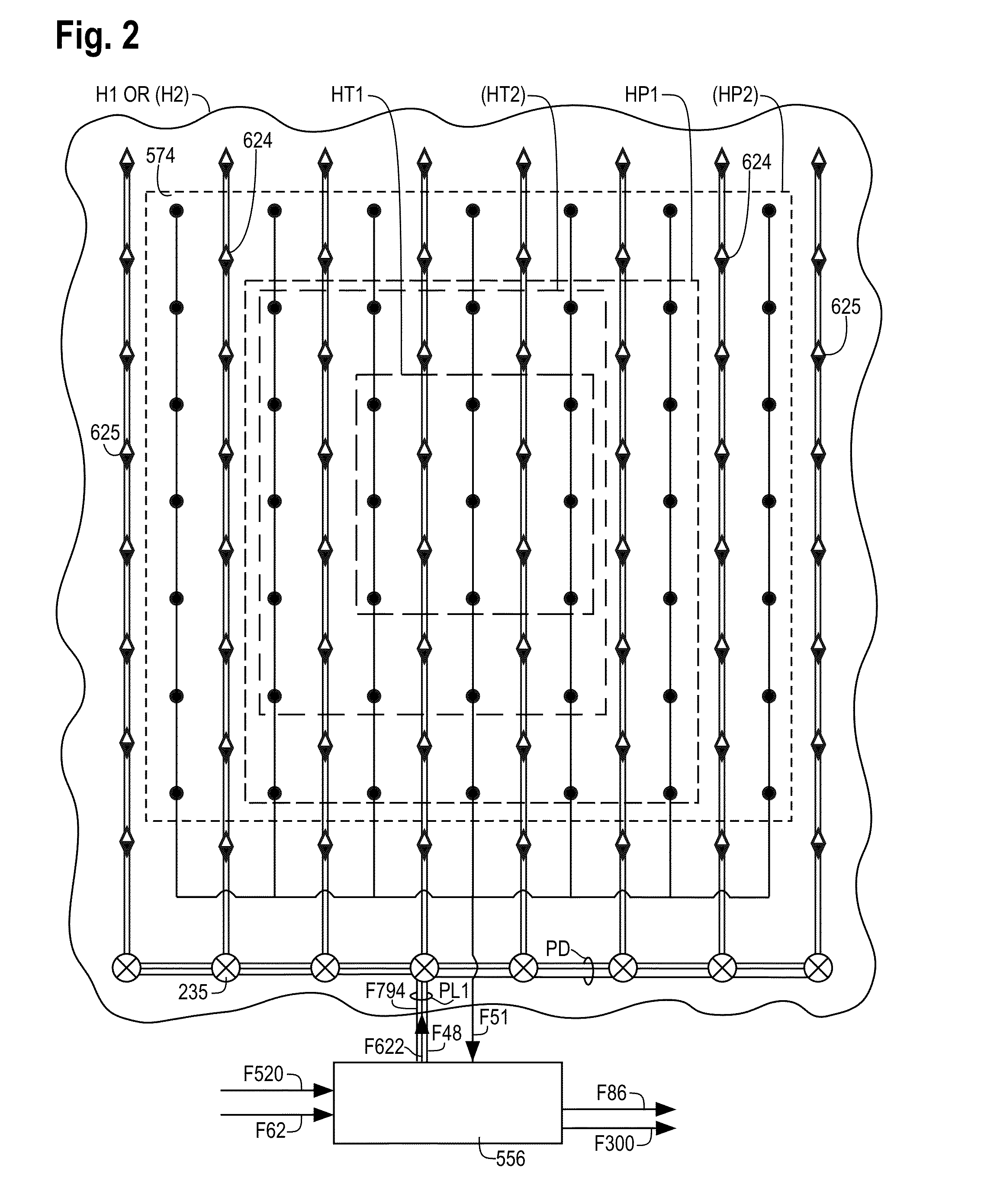Calciner enhanced oil recovery
a technology of enhanced oil recovery and calciner, which is applied in the field of enhanced oil recovery of calciner, can solve the problems of reducing the profitability of the system, unable to meet the needs of large-scale production, and unable to achieve substantial volumes of reliable and affordable oil, so as to achieve the effect of enhancing system profitability
- Summary
- Abstract
- Description
- Claims
- Application Information
AI Technical Summary
Benefits of technology
Problems solved by technology
Method used
Image
Examples
Embodiment Construction
[0073]Referring to schematic FIG. 1, in some embodiments of the Calciner Enhanced Oil Recovery™ system 10, an alkaline carbonate from a first carbonate resource L1 may be mined and comminuted or crushed in a first mining-crushing system MC1 and crushed carbonate delivered to a first calciner or kiln C1 located near, close to, or on the first carbonate resource L1, and near to, close to, or over a first hydrocarbon trial site HT1 on a first fossil or hydrocarbon resource H1. Crushed carbonate comprising calcium (calcite or limestone), magnesium (magnesite), or a mixture thereof (e.g. dolomite), may be heated or calcined in the first calciner C1 sufficiently to generate CO2 and an alkaline oxide comprising calcium oxide (lime), magnesium oxide (magnesia), or a mixture thereof (dololime).
[0074]Some embodiments provide for delivering the first enhancing fluid comprising a first portion of the generated CO2 using a first local enhancing pipeline PL1 and injecting the first enhancing flui...
PUM
| Property | Measurement | Unit |
|---|---|---|
| size | aaaaa | aaaaa |
| size | aaaaa | aaaaa |
| time | aaaaa | aaaaa |
Abstract
Description
Claims
Application Information
 Login to View More
Login to View More - R&D
- Intellectual Property
- Life Sciences
- Materials
- Tech Scout
- Unparalleled Data Quality
- Higher Quality Content
- 60% Fewer Hallucinations
Browse by: Latest US Patents, China's latest patents, Technical Efficacy Thesaurus, Application Domain, Technology Topic, Popular Technical Reports.
© 2025 PatSnap. All rights reserved.Legal|Privacy policy|Modern Slavery Act Transparency Statement|Sitemap|About US| Contact US: help@patsnap.com



